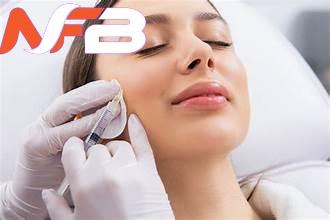How To Clean A Mouthguard
Cleaning a mouthguard is an essential part of maintaining good oral hygiene and ensuring the longevity of the device. A mouthguard, also known as a mouth protector, is a protective device worn over the teeth and gums to prevent injury during sports, grinding, or other activities that may cause teeth clashing. Over time, mouthguards can accumulate bacteria, plaque, and debris, which can lead to bad breath, gum disease, and other oral health issues if not properly cleaned and maintained.
Importance of Regular Cleaning
Regular cleaning of a mouthguard is crucial for several reasons:
- Prevents Bacterial Growth: Mouthguards can provide an ideal environment for bacteria to grow, especially when not cleaned regularly. These bacteria can cause infections and other oral health problems.
- Removes Debris and Plaque: Cleaning helps remove food particles, plaque, and other debris that can accumulate on the mouthguard, reducing the risk of gum disease and tooth decay.
- Freshens Breath: A clean mouthguard contributes to fresher breath. When a mouthguard is not cleaned, it can harbor bacteria that cause bad breath.
- Extends Lifespan: Regular cleaning can help extend the lifespan of the mouthguard by preventing the buildup of damaging substances.
Step-by-Step Cleaning Guide
Cleaning a mouthguard is a straightforward process that requires a few simple steps:
1. Rinse with Cold Water
- Start by rinsing the mouthguard with cold water to remove any loose debris.
2. Use a Mild Soap
- Apply a small amount of mild soap to a soft-bristled toothbrush. Gently scrub all surfaces of the mouthguard, making sure to clean all areas thoroughly.
- Rinse the soap off the mouthguard with cold water, ensuring all soap residue is removed.
3. Soak in Vinegar Solution (Optional)
- For a deeper clean, mix equal parts water and white vinegar in a bowl. Soak the mouthguard in this solution for about 30 minutes.
- After soaking, rinse the mouthguard thoroughly with cold water to remove any vinegar taste and smell.
4. Dry the Mouthguard
- Use a clean towel to dry the mouthguard. This helps prevent bacterial growth by removing moisture.
Additional Tips
- Daily Cleaning: Clean your mouthguard after each use.
- Storage: Store the mouthguard in a protective case when not in use. This prevents damage and keeps it clean.
- Regular Inspection: Regularly inspect your mouthguard for signs of wear. If it shows significant signs of damage or deterioration, consider replacing it.
- Professional Cleaning: For more thorough cleaning or if you’re unsure about how to clean your mouthguard, consult your dentist. They can provide professional cleaning and advice tailored to your specific mouthguard.
FAQs
How often should I clean my mouthguard?
+Clean your mouthguard after each use, and consider soaking it in a vinegar solution weekly for a deeper clean.
Can I use hot water to clean my mouthguard?
+No, it's recommended to use cold water. Hot water can potentially warp or damage certain types of mouthguard materials.
How long does a mouthguard last?
+The lifespan of a mouthguard can vary depending on usage and material. Typically, a mouthguard should be replaced every 1-2 years or sooner if it shows signs of wear.
Conclusion
Maintaining the cleanliness of your mouthguard is a critical aspect of oral hygiene and the longevity of the device. By following the steps outlined above and incorporating regular cleaning into your routine, you can ensure your mouthguard remains effective and your oral health is protected. Remember, a clean mouthguard is not just about the device itself, but also about the health and well-being of your teeth and gums.
